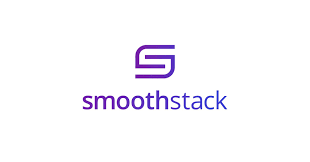Smoothstack has sent shockwaves through the tech industry, sparking intense debate on social media platforms like Reddit. Action lawsuits against Smoothstack, a company known for its software engineering training programs, has brought to light controversial practices in the tech education sector. As allegations of unfair contracts and questionable business practices surface, the case has drawn attention from aspiring developers, industry professionals, and legal experts alike.
At the heart of the Smoothstack lawsuit are claims regarding the company’s Training Repayment Agreement Provision (TRAP). This agreement, which has been a subject of scrutiny in Smoothstack reviews, reportedly binds participants to repay training costs if they leave the program early or fail to secure employment through Smoothstack’s placement services. The lawsuit aims to examine the legality and ethics of such agreements, potentially reshaping how tech training companies operate and how they interact with aspiring software engineers in the future.
Overview of Smoothstack and Its Business Model

Smoothstack has emerged as a significant player in the tech industry, offering a unique approach to bridging the talent gap in software engineering. The company operates on a Hire-Train-Deploy (HTD) model, which has gained attention for its innovative approach to creating skilled tech professionals.
Smoothstack’s Training Program
At the core of Smoothstack’s business model is its intensive training program. The company identifies high-aptitude individuals, regardless of their prior experience in the field. These candidates undergo a rigorous selection process, including coding challenges and technical reviews. Once selected, participants enter an 8-14 week intensive training period.
The training simulates real-world scenarios, focusing on practical skills rather than purely academic knowledge. Trainees work on projects that mirror actual industry challenges, preparing them for immediate deployment upon completion. This approach aims to provide participants with the equivalent of 2-3 years of experience in a condensed timeframe.
Smoothstack’s curriculum is tailored to meet the specific needs of their client companies. This customization ensures that trainees are equipped with skills that are directly applicable to their future roles. The program covers various areas of expertise, including Application Development, Cloud Computing, Digital Platforms, Data Engineering, AI, and Cybersecurity.
Client Partnerships
Smoothstack has forged partnerships with Fortune 500 companies and government agencies, positioning itself as a solution provider for organizations struggling to find tech talent with the right skill set. The company’s approach to talent upskilling offers several benefits to its clients:
- Access to a pool of trained professionals not yet available in the open market
- Reduced risk associated with hiring costs and attrition
- Scalability to meet future talent needs
- Proven results from collaborations with other major corporations
One notable partnership is with Databricks, a leading data and AI company. As a Databricks Consulting Partner, Smoothstack expands its capacity to create new talent at scale, enabling clients to maximize the potential of the Databricks Lakehouse platform. This collaboration enhances Smoothstack’s ability to offer expertise in data solutions, modernizations, and analytics strategies.
Employment Structure
Smoothstack’s employment model is designed to provide stability for both the trainees and client companies. Here’s how it typically works:
- Candidates who successfully complete the training are hired as Smoothstack employees in consultant roles.
- These consultants are then deployed to client companies, either remotely or on-site, for a period of two years.
- During this time, consultants receive ongoing support and mentorship from Smoothstack.
- After the two-year period, consultants have several options:
- Return to Smoothstack for additional training and potential advancement
- Transition to the client company’s payroll if the opportunity arises
- Seek new employment opportunities with their newly gained experience
This structure aims to create a win-win situation. Trainees receive guaranteed employment and valuable experience, while client companies gain access to custom-trained talent without the risks associated with traditional hiring processes.
Smoothstack’s business model represents a novel approach to addressing the tech talent shortage. By combining rigorous training with strategic partnerships and a unique employment structure, the company has positioned itself as an innovative solution provider in the competitive tech recruitment landscape. As the demand for software developers continues to grow, with projections indicating a 25.7% employment growth between 2022 and 2032 according to the Bureau of Labor Statistics, Smoothstack’s model may play an increasingly significant role in shaping the future of tech talent acquisition and development.
Details of the Class Action Lawsuit on Smoothstack
The Smoothstack lawsuit has brought to light a series of allegations against the IT staffing agency, raising serious questions about its business practices and treatment of employees. The legal action, filed in the U.S. District Court for the Eastern District of Virginia, has drawn attention to the company’s use of Training Repayment Agreement Provisions (TRAPs) and other controversial practices.
Plaintiff’s Allegations
Justin O’Brien, a former Smoothstack employee, has come forward as the lead plaintiff in this class action lawsuit. O’Brien alleges that Smoothstack pressured him and other employees to sign increasingly restrictive contracts as they progressed through the firm’s training and job placement scheme. The lawsuit claims that Smoothstack’s practices amount to “modern-day indentured servitude,” trapping employees in their jobs through coercive contract provisions.
According to the complaint, Smoothstack failed to pay wages during the first three weeks of training, despite requiring employees to work extremely long hours, including overtime. After the training period, instead of facilitating permanent employment as advertised, Smoothstack allegedly sold O’Brien’s labor to Accenture’s federal government unit. When that assignment ended, O’Brien claims he was paid minimum wage while waiting indefinitely for the next assignment.
Key Legal Claims
The lawsuit alleges several violations of labor laws and workers’ rights:
- Fair Labor Standards Act (FLSA) Violations: The complaint asserts that Smoothstack’s practices violate the FLSA in multiple ways, including failure to pay minimum wages and overtime compensation.
- Unconscionable TRAPs: The lawsuit challenges the legality of Smoothstack’s TRAPs, which require employees to complete 4,000 hours of billable client work or pay up to nearly $30,000 before leaving the company. This provision is alleged to be an unlawful penalty that violates Virginia state law.
- Wage Theft: The plaintiffs claim that Smoothstack’s practices, including the TRAPs and unpaid training periods, amount to wage theft.
- Retaliation and Intimidation: The lawsuit alleges that Smoothstack uses broad waiver, confidentiality, non-disparagement, and non-disclosure provisions in employment and separation agreements to dissuade employees from asserting their rights under the FLSA.
- Interference with Government Investigations: The complaint states that Smoothstack’s policies interfere with the Department of Labor’s ability to effectively investigate and enforce the FLSA by requiring employees to inform Smoothstack first if contacted by government investigators.
Potential Class Members
The class action lawsuit seeks to represent a broad group of current and former Smoothstack employees who have been affected by the company’s practices. Potential class members include:
- Employees who participated in Smoothstack’s training program since April 13, 2020.
- Workers who signed TRAPs or similar agreements during their employment with Smoothstack.
- Individuals who experienced unpaid or underpaid training periods.
- Employees who were subject to the 4,000-hour billable work requirement.
- Workers who faced penalties or threats of legal action for leaving the company before fulfilling their contractual obligations.
The lawsuit aims to invalidate Smoothstack’s TRAPs, recover unpaid wages and damages under the FLSA, and put an end to practices that the plaintiffs argue are predatory and unlawful. As the case progresses, it has the potential to set important precedents for the tech training and staffing industry, particularly regarding the use of TRAPs and other restrictive employment practices.
Examining the TRAP Agreement Controversy
Training Repayment Agreement Provisions (TRAPs), also known as “stay-or-pay” clauses, have become a contentious issue in the tech industry and beyond. These provisions, which require employees to repay training costs if they leave their job within a specified period, have sparked debate over their legality and ethical implications.
Definition and Purpose of TRAPs
TRAPs are contractual terms that obligate employees to reimburse their employer for training expenses if they depart before a predetermined time. Originally, these clauses were primarily used in high-paying roles or specialized industries with talent shortages, such as airline pilots. However, their use has expanded across various sectors, including healthcare, fast food, retail, and tech.
Employers argue that TRAPs protect their investment in employee training and development. A 2020 study by the Cornell Survey Research Institute found that nearly 10% of American workers reported being covered by a TRAP. The Student Borrower Protection Center estimates that major employers relying on TRAPs collectively employ more than one in three private-sector workers.
Smoothstack’s Specific TRAP Terms
In the case of Smoothstack, the TRAP agreement has come under scrutiny due to its stringent terms. According to the lawsuit filed against the company, Smoothstack’s TRAP requires employees to complete 4,000 hours of billable client work or pay up to nearly USD 30,000 before they can leave the company. This provision has been characterized as “modern-day indentured servitude” by critics.
The lawsuit alleges that Smoothstack’s practices trap employees in their jobs through these restrictive contract provisions. If employees resign or are terminated before completing the 4,000 billable hour requirement, or if they breach their employment agreement, Smoothstack has demanded a penalty representing supposed training costs and lost profits.
Legal and Ethical Concerns
The growing use of TRAPs has raised significant legal and ethical concerns. Critics argue that these agreements impede worker mobility, suppress wages, and disproportionately impact women and minority workers, particularly in low-wage industries with high turnover rates.
Legal challenges to TRAPs have emerged, with some courts finding merit in arguments that they violate labor-trafficking laws. For instance, the U.S. District Court for the Southern District of Ohio noted that contracts with egregious exit terms could compel employees to remain in positions out of fear of consequences.
Regulatory agencies have taken notice of the potential harm caused by TRAPs. The Consumer Financial Protection Bureau (CFPB) has expressed its intention to evaluate these provisions for potential violations of consumer financial laws. The Federal Trade Commission (FTC) has proposed a rule that would ban employers from imposing non-competes on their workers, potentially including certain TRAPs within its scope.
The U.S. Department of Labor (DOL) has also taken action, filing a complaint against a company for practices similar to those alleged in the Smoothstack lawsuit. The DOL argued that such practices violate the Fair Labor Standards Act by potentially reducing employees’ pay below the federal minimum wage and chilling their ability to exercise their rights.
Several states have moved to ban or restrict the use of TRAPs. Connecticut explicitly prohibits employers from requiring employees to sign agreements containing TRAPs, while California requires employers to reimburse employees for business expenses, including certain training costs.
As the controversy surrounding TRAPs continues to grow, employers are advised to carefully consider their use and ensure they are narrowly tailored to recover actual costs incurred. The more an employer can connect a repayment to a genuine expense, the more likely it is to withstand legal scrutiny. However, the increasing attention from regulatory bodies and lawmakers suggests that the future of TRAPs may be uncertain, potentially reshaping how companies approach employee training and retention strategies.

